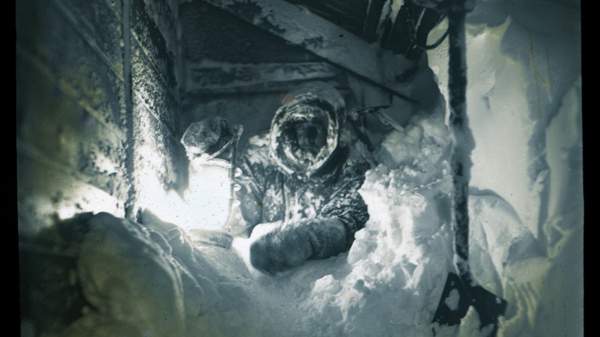Overview
The photos taken during the Australasian Antarctic Expedition from 1911-1914 have a ghostly beauty. The grandeur and unforgiving severity of the environment is palpable. Looking at them, I felt a mix of contradictory emotions: utter, mouth-gaping amazement, pride in the bravery of my fellow (long-dead) countrymen, and minor feelings of worthlessness. The collection was recently collated and put online by the National Library of Australia Commons for all to enjoy without a trip to Canberra (although it’s almost worth the 3-hour drive to see them in the flesh).
The photos depict incredible vistas of the Antarctic, the wildlife and the experiences of the explorers. The yellowish tinge, light leaks and that 1950s textbook look that are indicative of their age somehow make them seem far more real than the crystal-clear, technicolour glossies that today’s cameras and photo-editing programs produce. Looking at these ones, you feel the presence of the person who was there experiencing it, rather than the properties of a highly technical camera.
The captions, such as 'we scanned every yard of the mighty barrier in the hope of finding a possible landing place but no so much as a foothold offered for over one hundred miles' and 'the meteorologist with an ice mask (literally, a mask of ice closing off his hood))' (Frank Hurley, 1913) provide hints to the surviving stories of the trip. The most epic is the survival tale of three men - Mawson, Mertz and Ninnis - who set off on a sledging trip. After a successful beginning, tragedy struck when Ninnis, a team of six dogs and the sled containing most of their food fell down a crevasse, never to be seen again.
The other two immediately turned back and headed for the base camp. On the way, they had to eat the remaining dogs, which killed Metz (apparently the livers of the dogs are too high in Vitamin A for humans to handle). Mawson cut his sled in half with a pen knife and dragged the sled with the geological specimens 160 kms to the base camp, arriving just hours after their vessel left Antarctica. He had to stay for another, unplanned year with the six men who volunteered to stay and search for him and the others. A little bit worse than missing the last ferry home, huh?
Images by Frank Hurley via the National Library of Australia Commons
